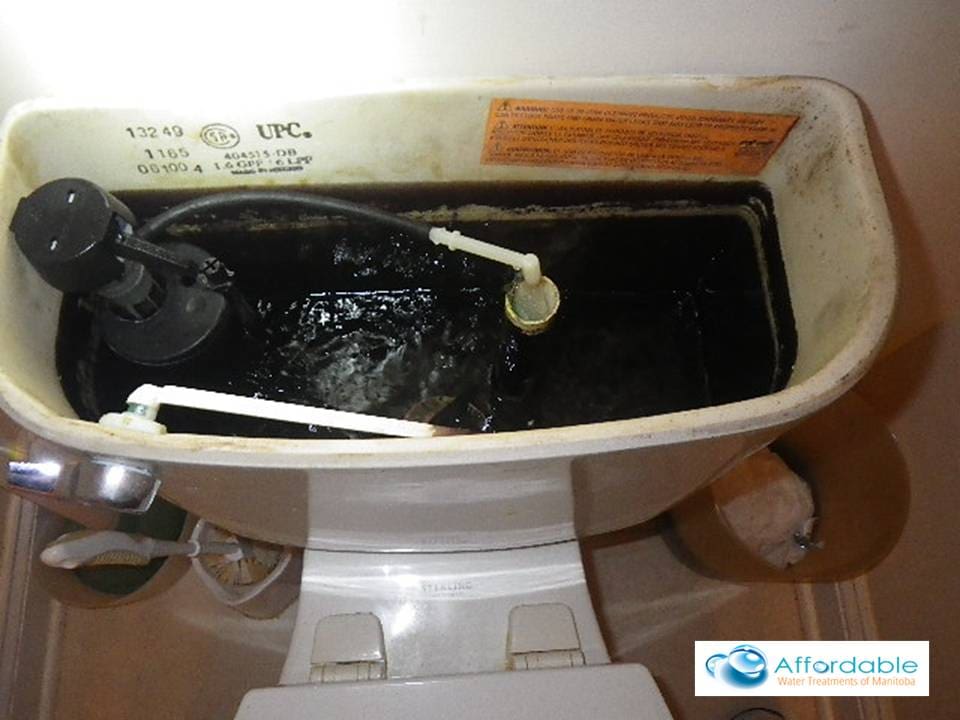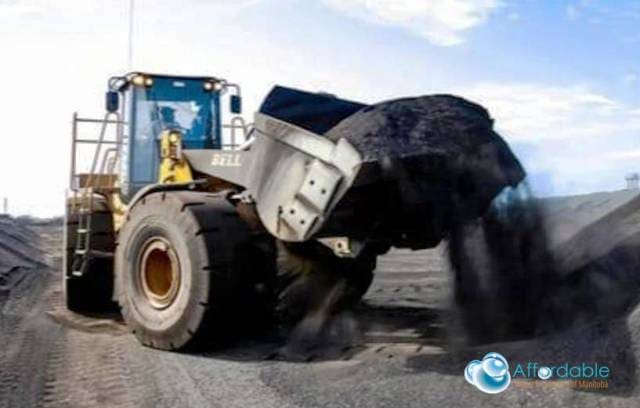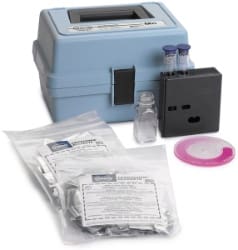What causes Black Residue in the Toilet Bowl?
Have you ever opened the lid of your toilet and discovered what looks like dark stains or black residue in the toilet bowl? It’s most likely if you have manganese in your well water that this issue results from. Sometimes you may notice these dark stains on your shower or dishwasher. The stains create an unpleasant image against the white porcelain backdrop. The stains are also a nuisance to remove, especially if they constantly occur.
The presence of manganese is not a serious concern, and black stains are very common in many households. However, if your water contains high mineral levels, it may affect your plumbing, laundry, appliances, and the overall quality of the water you use to drink and cook. With time, the mineral will form deposits in your plumbing that will continue to build up and restrict water flow in your household.
Very little is known about manganese. However, we know that we need it in our diet as it is a common nutrient and supplement necessary for our bodies to function. There is no doubt that manganese is a valuable nutrient; however, consuming it in high amounts will lead to long-term effects on our nervous system.


Can manganese in water make you sick?
Manganese is a very abundant metal that naturally occurs in soil and water. The mineral is also found in various consumable plants, such as oatmeal, beans, and nuts. We only need to consume small doses of the mineral to support our health but too much can be harmful.
However, in some parts of North America, the soil contains high levels of manganese. The municipal tap water and well water in these regions will also contain high levels of manganese. Water containing elevated manganese levels stains appliances and has an earthy, dirty, metallic taste. The mineral causes issues with water treatment appliances and water heaters, leading to decreased life spans and additional maintenance.
Deeper wells have more manganese content because the water has much longer contact with the rock. In regions where coal has been mined, the metal occurs due to surface and deep mining activities. Manganese occurs together with iron in groundwater though in much lower concentrations. Iron and manganese find their way into drinking water supplies and have strong metallic tastes. Though water from springs and wells has high iron and manganese content, it may appear colourless. Then when the water comes into contact with oxygen, the minerals oxidise to form black (manganese) or orange-brown (iron) compounds. Iron and manganese do not lead to any health concerns if they are present in low concentrations in drinking water.


Testing for manganese in your water
Sometimes you don’t need to test your water to determine the presence of iron and manganese. All you need to do is to take note of any stains, particulates, or metallic taste. If you suspect that your water contains high levels of manganese, you should conduct a comprehensive water test in a certified laboratory. Once you determine the level of contaminants, consult a water expert to find the best treatment solution. They will recommend a water treatment system designed specifically for the water in your region at an affordable price. You can decide on a system that treats the water that flows into your home or a system designed to treat your drinking water.
A test will also determine the form of manganese or iron in your water. For example, if the water from your spring or well is initially clear and then fills up with black or orange-brown particles, the minerals are dissolved in water and require a specialised filter. On the other hand, if solid particles of the two minerals are already apparent in the water, they are in their oxidised form, and you will need a different water filter.


How do I stop black stains in my toilet?
Unlike calcium, iron, and magnesium, which form the hardness of water, manganese is not easy to filter. The elimination process is affected by the pH of the water, the mineral’s oxidation state, and the presence of other ions in the water. Manganese is a common compound that appears together with hydrogen sulphide and iron. It is a challenge to get rid of.
Affordable Water Treatments can advise on how to get rid of manganese, and the best possible solution for your situation. A standard water softener is not the most ideal for removing manganese. The mineral will harm and foul the resin bed in the softener. Your softener will need more frequent backwashing, further stressing the system.
The first step is to get a water test to reveal which form of manganese is in your water. Ideally, the most feasible solution is to use a true iron filter because manganese has similar chemical elements to iron. Do not let water with high levels of manganese into your water purifier. Though some systems, such as RO systems, are designed to remove manganese, they do so only when the water has low levels of the minerals. You will have to filter the water before allowing it into your RO system; otherwise, it will plug up the system’s membrane and shorten its lifespan.


Mould vs. Manganese Black spots
The black stains in your toilet bowl may also result from mould. If the dark spots appear above the waterline, then there are high chances that it is just black mould. Manganese stains appear below the waterline in the bowls because the mineral deposits settle at the bottom. A toilet bowl is ideal for moulds to grow because the waterline has a sufficient air supply. Additionally, constant toilet flushing will provide them with the moisture they need to grow and multiply.
You can remove the stains using bleach, muriatic acid, or toilet detergent. You can also prepare a baking soda, borax, and vinegar mixture and apply it to the stains. You should wait for at least half an hour before scrubbing off the solution. We recommend using the vinegar and baking soda solution because it’s less toxic and will not corrode your plumbing. Moreover, bleach and acid will kill good microbes in the septic system.
You will find mould spores anywhere in your house. They thrive in damp, warm dark surfaces such as toilet bowls. You may even see them in your toilet tank. Mould comes in many colours. Clean your toilet bowl and appliances with vinegar and baking soda regularly to prevent mould from accumulating in these areas. The vinegar will kill their roots as it penetrates through the surfaces.


